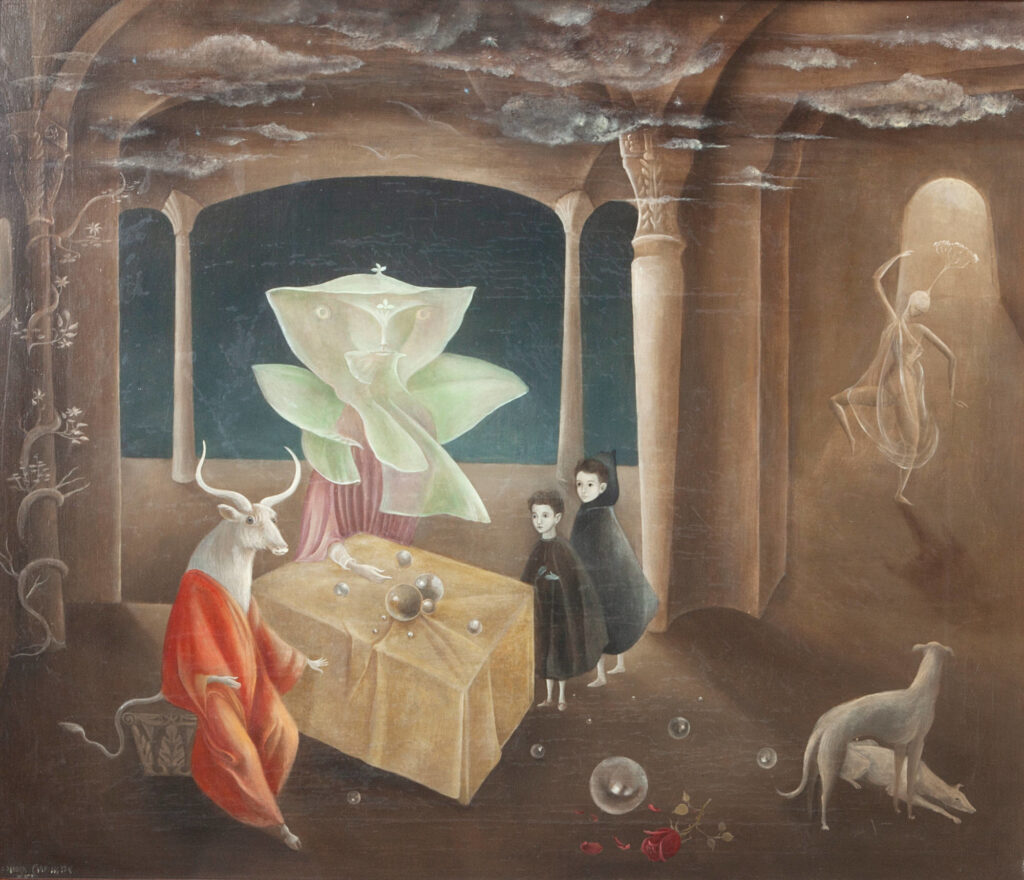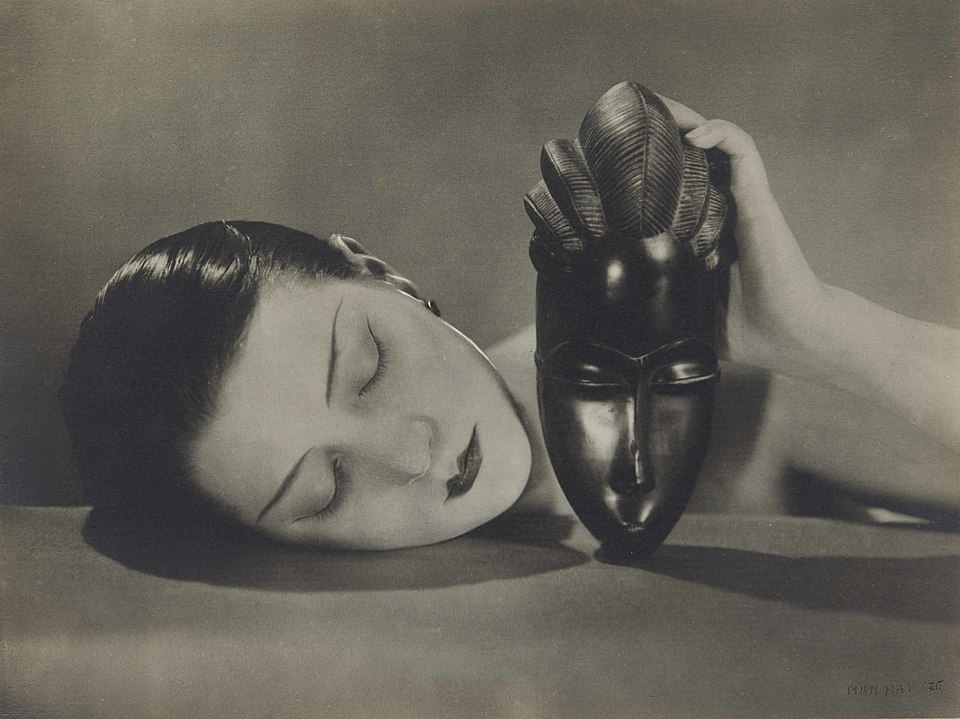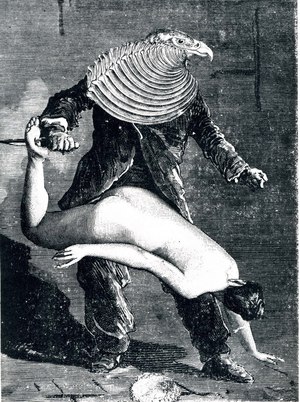100 Years of Surrealism: A Tribute to the Dreamers Who Rewrote Reality
It was in the black mirror of anarchism that surrealism first recognized itself.
-Andrè Breton
This year marks the centenary of Surrealism, a movement born from a radical vision: to pierce the veil of the everyday and expose the marvelous hidden beneath. What began in 1924 with André Breton’s Surrealist manifesto and definition, expanded quickly to include his and Philippe Soupault’s experiments in automatic writing—like The Magnetic Fields—soon grew into a global revolution of thought, art, and expression.
At its core, Surrealism was literary: a revolt of poets and dreamers. Paul Éluard, Robert Desnos, René Char, and Benjamin Péret each pushed language beyond reason, opening poetry to the unconscious, the erotic, the political. Breton’s Surrealist Manifesto didn’t just define a movement—it declared a new way of being.
But Surrealism was never confined to a single form or geography. Its spirit traveled—through exile, imagination, and shared revolt—and was transformed by visionary artists around the world. Women, long marginalized in official accounts, were always at its heart.
Leonora Carrington, whose fevered, mythic paintings and stories bridged Mexico and Europe, saw Surrealism not as theory but as personal and cosmic rebellion. Her classic novel The Hearing Trumpet has been a longtime favorite at Book Beat.
Other Surrealist women writers and artists include Remedios Varo, Dorothea Tanning, Toyen, and Unica Zürn, whose work reveals the movement’s dark, feminist, and transformative depths.
In the United States, Surrealism found new life through the radical activism and poetic vision of Franklin and Penelope Rosemont, who connected the movement with labor struggles, African American surrealist writers, and the 1960s counterculture. Their work ensured that Surrealism in America would be both a literary tradition and a revolutionary tool.
Here’s to 100 years of Surrealism.
During this centennial year several outstanding works have been published that deserve praise and consideration for their contribution in surrealist studies. Here are a few of the most noteworthy, focusing on literature (poetry, prose, and manifestos) that shaped or reflected the movement’s evolution:
Why Surrealism Matters (2024) by Mark Polizzotti “makes a convincing and enjoyable case. . . . Mr. Polizzotti carefully balances the movement’s aspirations and attainments against its flaws and contradictions, hoping to recuperate Surrealism’s ‘critical and imaginative essence’ for the present. . . . The best concise account of the movement available.”–Michael Saler, Wall Street Journal
Surreal Spaces: The Life and Art of Leonora Carrington (2024) written by the subjects cousin Joanna Moorhead, is an accessable and well illustrated volume that offers new information on the artist’s life. “Readers unfamiliar with the life, art, and writings of the surrealist artist Leonora Carrington will get an exceptional introduction in Surreal Spaces …. Carrington called surrealism the belief “that nothing is ordinary; that everything in life is extraordinary.” That spirit permeates every page of this handsome book.” -Shelf Awareness
“I couldn’t stand being a victim. I wanted to make my own world.”
—Leonora Carrington
Women Artists and the Surrealist Movement (2024) by Whitney Chadwick
Women Artists and the Surrealist Movement, now revised with a new foreword by art historian Dawn Ades, contains a wealth of extracts from unpublished writings and numerous illustrations never before reproduced. Since this book was first published, it has acquired the undeniable status of a classic among artists, art historians, critics, and cultural historians. It has inspired and necessitated a revision of the story of the Surrealist movement.
Surrealism and Anti-Fascism Anthology (2025) with Karin Althaus (Editor), Ara H Merjian (Editor), Matthias Muhling (Editor), et al. Surrealism and Anti-fascism provides a panoramic view of Surrealism’s opposition to fascism. Surrealists denounced European colonial policies, organized resistance to fascist governments and movements, fought for the Spanish Republic, were persecuted, escaped into exile and died in the war against the Nazis. Today, as fascist-adjacent regimes again begin to proliferate internationally, this volume, bringing together central texts of political Surrealism from the first manifestos to the present day, could not be more timely.
Foundational Works
Bruges-la-Morte, (1892) a Symbolist novel by Georges Rodenbach recently reprinted, is often cited as a precursor to Surrealism due to its use of transmediality, exploring themes of decay and death, and its innovative blending of text and photography. While not directly a Surrealist work, it paved the way for Surrealist exploration of the subconscious and the blending of art forms.
Maldoror & the Complete Works of the Comte de Lautréamont (1860s) This text is often seen as a precursor to Surrealism due to its dream-like imagery, vivid and sometimes grotesque descriptions, and its exploration of the subconscious mind, which later became central themes in Surrealist art and literature.
Magnetic Fields (1919) – André Breton & Philippe Soupault
The first example of automatic writing, this prose-poetry hybrid opens a door into the subconscious with dream logic and startling imagery.
Manifestoes of Surrealism (1924–1930) – André Breton
Breton’s fiery declarations define Surrealism as both a literary revolution and a philosophical stance, blending Freud, Marx, and poetic rebellion.
Nadja (1928) – André Breton
A semi-autobiographical novel chronicling Breton’s obsession with a mysterious woman; a haunting exploration of madness, love, and the surreal in everyday life.
Liberté ou l’amour! (1927) – Robert Desnos
A wildly erotic, poetic novel blending desire, humor, and Surrealist absurdity, censored in its day for its radical content.
Paris Peasant (1926) – Louis Aragon
A poetic, hallucinatory guide through the covered arcades and hidden corners of Paris, mixing documentary, reverie, and the uncanny.
Last Nights of Paris (1928) – Philippe Soupault
A haunting novel following a mysterious woman through fog-drenched streets; noir-tinged and dream-soaked, it captures Paris as a site of obsession and psychic wandering.
Key Poetic Works
Capitale de la douleur\ Capital of Pain (1926) – Paul Éluard
A cornerstone of Surrealist poetry, where love and language dissolve boundaries between reality and dream.
La Liberté ou la Mort (1947) – Benjamin Péret
Political surrealism at its sharpest, Péret fuses revolutionary passion with hallucinatory verse.
Hypnos (1944) – René Char
Char’s cryptic, lyrical fragments blend surreal imagery with resistance philosophy from WWII.
Grains of Sleep (1946) – Louis Aragon
Surrealist love poetry steeped in political urgency and vivid dreamscapes.
A Visual Language
The Photographs of Man Ray 1920-1934 Man Ray, a pivotal figure in Surrealism and photography, significantly impacted both movements by pushing the boundaries of photographic techniques and incorporating surrealist principles into his work. He created surreal, irrational images through rayographs and solarization.
Une Semaine de Bonté A Surrealistic Novel in Collage (1934) by Max Ernst
Une Semaine De Bonté first appeared in 1934 in a series of five pamphlets of fewer than 1,000 copies each, and has never been reprinted before this present edition. Previously available only to a few libraries and collectors, this is a major source and great treat for anyone interested in the surrealists and their work, in collage, visual illusion, dream visions, and the interpretations of dreams.
“Art is the revelation of nature’s darkest secrets, those that remain hidden beneath the everyday appearance.”
-Max Ernst
All Books above still in print have been linked to our affiliate page at Bookshop.org, and many can be seen or ordered at Book Beat.



